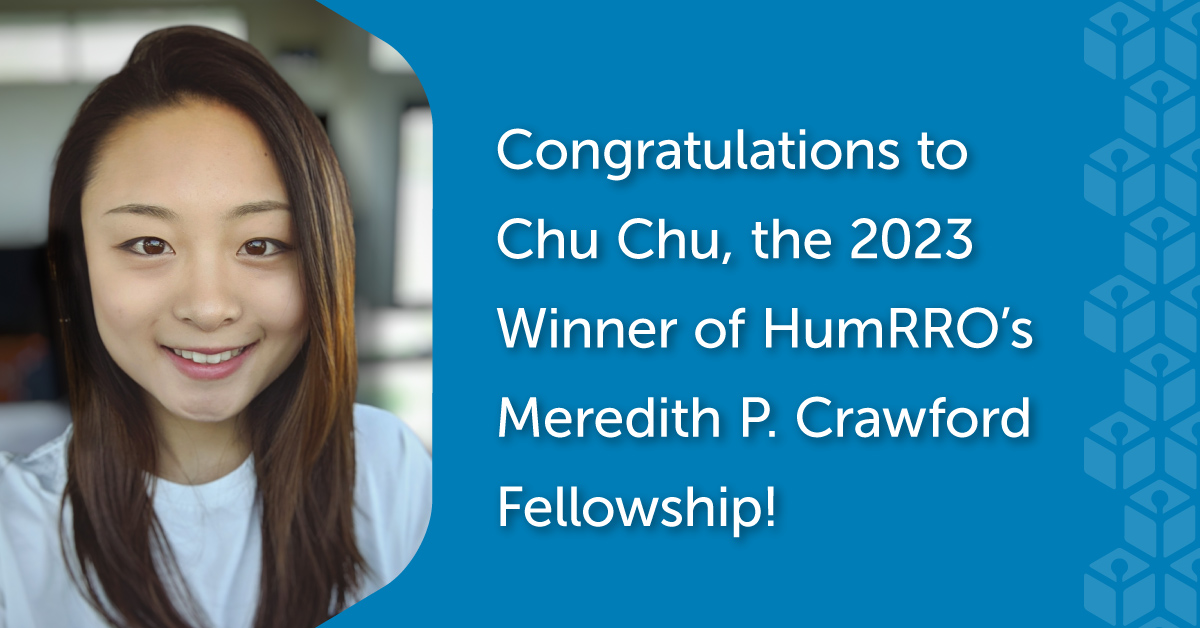A holistic approach to career guidance used in middle and high schools across the country may help narrow the persistent gender-based skills gaps in high-demand, high-paying professions in science, technology, engineering, and mathematics (STEM), according to a new paper co-authored by Rodney A. McCloy, Ph.D., principal scientist at HumRRO.
Published in the journal, Industrial and Organizational Psychology: Perspectives on Science and Practice, the paper examines how the traditional career guidance tools used in education significantly influence the gender-based skills gaps that persist in high-demand careers given their relatively narrow focus on interests.
For example, high-school-age boys, in general, report higher interest and self-efficacy in traditionally male-dominated STEM fields. In contrast, high-school-age girls tend to indicate higher interest and self-efficacy in caring professions and education, according to research from McCloy’s co-author Patrick J. Rottinghaus, Ph.D., program training director for the Counseling Psychology graduate program at the University of Missouri.
The gender divide also appears later on during college major selection and in pay and skills gaps. Fewer than two out of every 10 engineering majors are women, according to the Georgetown University Center on Education and the Workforce. For the technology sector, roughly 80 percent of all computer science graduates are male, according to the National Center for Education Statistics. Conversely, women constitute the majority of the lowest earning fields such as education, where 76 percent of workers are female.
The COVID-19 economy’s impact on skill development will further accelerate gender-based talent pipeline and compensation differences, placing a premium on personalized interventions that identify and maximize one’s competitive advantages, wrote McCloy, Rottinghaus, and the paper’s other co-authors, Chan Jeong Park of the University of Missouri, Rich Feller, Ph.D., professor of education at Colorado State University, and Todd Bloom, managing director at Western Governors University Labs.
A Holistic Approach
HumRRO has extensive experience helping public- and private-sector clients generate comprehensive, holistic assessments of career fit. We have developed and refined assessments to help students focus their career choice decisions, most recently modernizing a widely used interest inventory to reflect rapid changes in careers, particularly those involving STEM occupations. We have also conducted several applied research projects focused on assessing career fit, including developing and evaluating algorithms for matching students to careers that underlie an interactive online career exploration system.
This work clearly demonstrates that aptitude measures—tests assessing human potential to be successful in specific fields or occupations—can help adolescents consider careers in which they had little previous interest or to which they had little previous exposure, broadening the range of future career options in the process.
Industry-level analysis reported by McCloy and his co-authors found that assessing both interests and aptitudes identified an increased number of adolescent girls and boys with “career fit” for occupations in the growing workforce sectors of computer technology, manufacturing, construction, and health care. For girls, twice as many were found to have high fit for computer technology when considering their aptitudes relative to considering only their interests. Even greater discrepancies were found for the construction (7.1 times as many), manufacturing (4.1 times as many), and health care–technical (7.6 times as many) industries. Boys, too, showed a larger number (1.6 times as many) characterized by high fit for the health care–patient care industry.
“Discrepancies in workforce representation for various key sectors might be mitigated to no small degree if individuals learned they had the aptitudes necessary to perform the jobs in those sectors,” the authors concluded. “The interests might follow, or they might not, but knowing one could succeed in an occupation opens the door to one’s exploring it further (and with a different point of view).”
Matching Up
McCloy and his co-authors took a deeper look at the results of a career fit assessment intervention conducted in the state of Georgia. Sponsored by the Georgia Department of Education and the Technical College System of Georgia, more than 200,000 middle and high school students completed aptitude and interest assessments through the Career, Technical, and Agricultural Education (CTAE) program.
Across the high school student population participating in the intervention, only 12 percent of students indicated high interest for at least one of seven key manufacturing engineering careers, yet 27 percent of students demonstrated high aptitude, the authors found. For females, 4.9 times more students had a high aptitude for manufacturing and engineering than had a self-reported interest. For careers with a predominant skew toward women, data show 1.5 times more males had a high aptitude for health care–patient care careers, for example, than had a self-reported interest.
“By exposing students to careers and encouraging them to think more deliberately about their education choices earlier, while simultaneously arming our faculty with meaningful insights about students’ individual strengths and abilities, we can lay the foundation for a better-prepared workforce and a stronger future economy,” said Barbara Wall, Ph.D., director of Georgia State Career, Technical, and Agricultural Education.
The paper’s co-authors note that effective career guidance will require students, parents, and educators to develop and manage a composite view of a student’s interests and aptitudes, together with job demand information available to them.
“Consideration of both a person’s aptitudes (what they can do) and interest (what they like to do) provides a more complete picture of the career paths that person might fruitfully explore,” they wrote. “Integrative career assessment is critical to narrowing the gender gap in high-demand careers and improving equal gender representation and wages in the workforce.”
The type of holistic approach to career exploration and fit shared by McCloy and his co-authors can be applied in any organization or industry sector. HumRRO’s expertise in considering both aptitudes and interests to generate a full picture of an individual’s potential vocational paths makes us an ideal partner in providing career exploration options that help candidates and employees find the best career fit—and potentially reduce the gender gap in the process.








